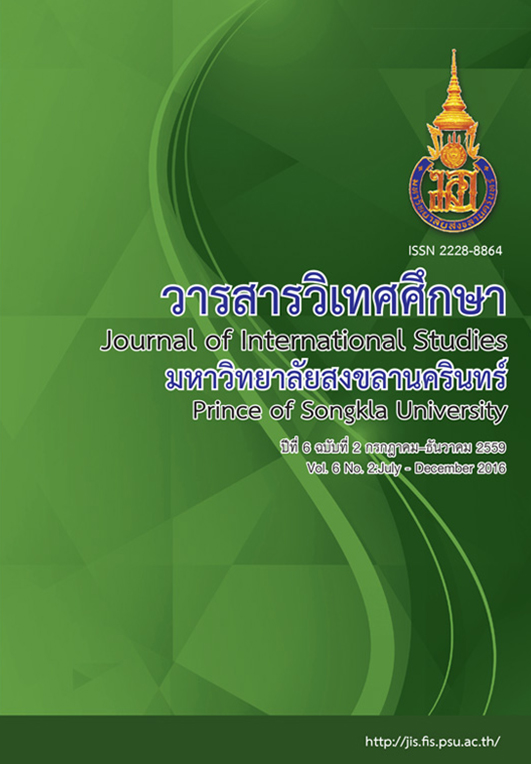A comparative Study of Indian Kathakali and Thai Classical Masked Play
Main Article Content
Abstract
This is a qualitative investigation to compare the classical Indian Kathakali dance and Thai Classical Masked Play (Thai Khon dance or Khon) in term of performance elements.
The research results revealed that Thai khon dance has developed from Chuck Nak Dukdamban Play, swordplay, and grand shadow play. Chuck Nak Dukdamban Play has influences from the legend of Cambodia’s Chuck Nak Dukdamban Play in the period of King Jayavarman II, Somdet Phra Ramathibodi II, Somdet Phra Maha Chakkraphat, and Somdet Phra Chao Prasat Thong who are kings of Ayutthaya, Thailand. It was showed that this Cambodian play took place in a coronation ceremony which is similar to Thailand’s. The performers were divided into group of scrupulous men and devils. The ending of the performance was the victory of the scrupulous group. The style of fighting in Khon is adapted from swordplay, and the characteristic of the performance is adapted from grand shadow play. Before the practicing stage, performers from both countries, Thailand and India, have to pay homage to their teachers which are called “A-rung ngetum” for Indians and “Krob-kru” for Thais. The study found that Indian Kathakali and Khon are similar in terms of posture, and tow techniques known as Teab Learm and Ten sao. These techniques are done to strengthen performers’ legs to carry other performers’ weight to do an acrobatic pyramid. However, the position of performers’ legs is different; Indians use half-sitting technique whereas Thais use a full one. Kathakali performers are exclusively males, whereas Khon performances included female cast members. That is the reason why the protagonists and the ones who act as human beings do not need to wear masks only make-up. For both performances, the performers use their hands to communicate which is called dancing art terminology, but performers in Kathakali move faster with Mudsa (interpretation of dramatic composition). In contrast, Khon is focused on neat movements according to patterns of Thai classical plays.
Article Details
Statements and opinions expressed in articles herein are those of the authors and do not necessarily reflect the position of the editors or publisher.
Article, information, text, image, etc. which are published in Journal of International Studies, belong to Journal of International Studies. If anybody or any organization would like to use part or whole of them, they must receive written permission from Journal of International Studies before usage.
References
Bolland, D. (1980). A guide to Kathakali: with the stories of 36 plays. New Delhi: National Book Trust.
Devi, R. (1990). Dance dialects of India. Delhi: Motilal Banarsidass.
Gopal, R. & Dadachanji, S. (1953). Indian dancing. London: Phoenix House, p.24 (quoting the Abhinaya Darpan).
Kultitikit, C. (1994). Classical Indian dance. Research report, Chulalongkorn University, Thailand.
Loubère, S. de la (1693). A new historical relation of the kingdom of Siam by Monsieur de la Loubere. (A.P. Gen. R.S.S., trans.). Retrieved from http://gateway.proquest.com/openurlctx_ver=Z39.882003&res_id=xri:eebo&rft_id=xri:eebo:image:98501:34
Wanlipodom, S. (1992). Classical music with Siamese economy and society. Bangkok: Ruenkaew.


